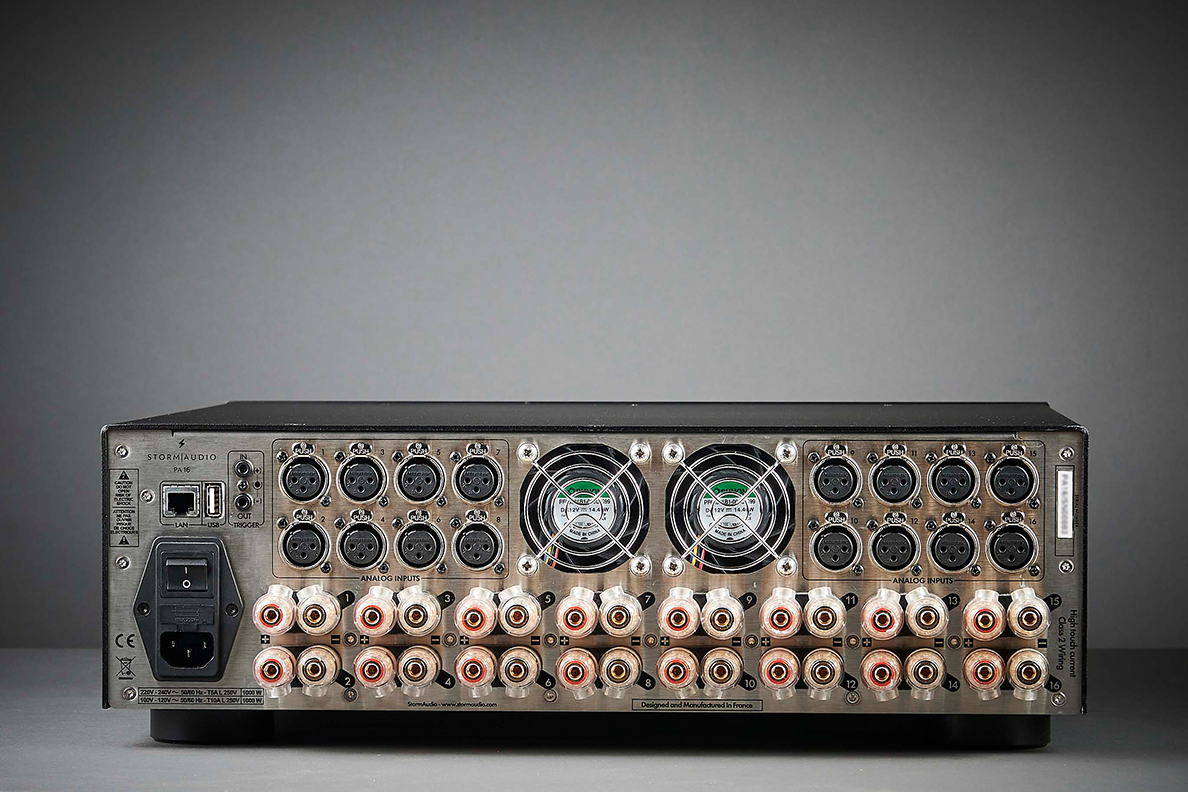
With this in mind, we have decided to “free our watts” by opening up how you can use the PA 16 in bridge-tied load mode.
Both PA 8 Ultra and PA 16 share the same circuit topology, with a total of four power supplies. In the case of the PA8 Ultra, each power supply drives two channels, while it drives four channels in the PA 16. While you could create up to 8ch in bridge-tied load mode with a PA 16, we recommend not to do more than 4ch bridged total per unit to avoid meeting the current limitations that can lead to some sound cut.
When bridging channels, you can still use the remaining outputs to drive additional speakers in single-ended mode. Keep in mind that you need to consider balancing the amount of power available per group of 4ch: 1-4, 5-8, 9-12, 13-16 due to our power-supply structure.
This translates into the following recommendations:
- You can bridge ch1-2, ch5-6, ch9-10 and ch13-14,
- You can use other channels: 3, 4, 7, 8, 11, 12, 15 and 16 for other speakers.
The unit is stable with low impedance, including when used in bridged mode. But it is important to balance the power needs in terms of channel distribution to avoid current limitation. It is important to point out that when in bridged mode the capability rises up to 800W: your speakers or subwoofers must be really demanding for the power supply to kneel down.
In order to use the PA 16 in bridged mode, you simply need to use a “Y” type XLR cable, driving the two channels with the same signal and then connect between the positive of ch1 and negative of ch2 (you can refer to PA8U wiring for reference).
A technical bulletin will be made available soon in our Client Portal.